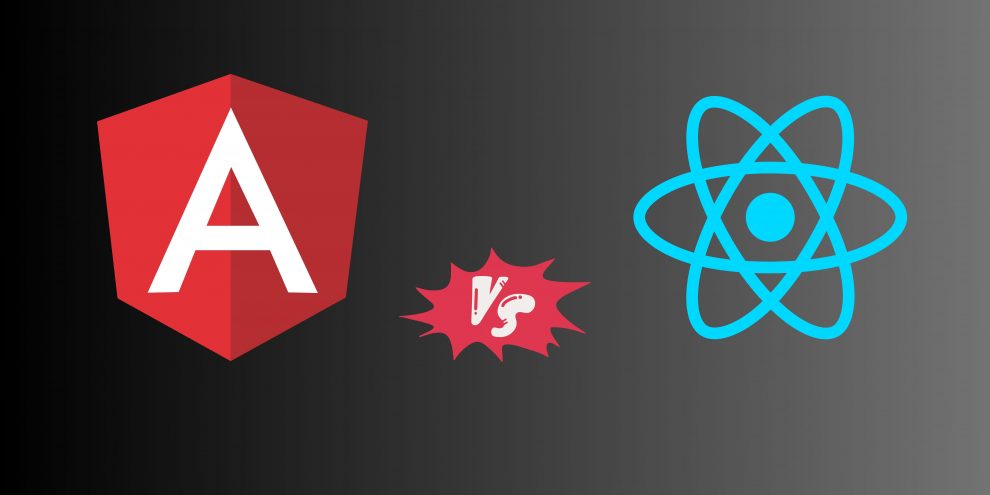In the ever-evolving world of web development, staying up-to-date with the latest trends and technologies is crucial. Two of the most popular JavaScript libraries/frameworks for building web applications, Angular and React, have been leading the charge for years. As we step into 2023 and look ahead to 2024, the debate over Angular vs. React continues to rage on. Which one should you choose for your next web development project? Let’s break down the pros and cons of each to help you make an informed decision.
Angular: The Full-fledged Framework
Angular, developed and maintained by Google, is a comprehensive front-end framework. It’s often referred to as an “opinionated” framework, meaning it provides a structured and opinionated way of building applications.
Strengths of Angular
Modular Architecture:
Angular encourages the use of modules, allowing you to divide your application into smaller, reusable pieces. This modular approach enhances maintainability and code organization, especially in large-scale projects.
Two-way Data Binding:
Angular’s two-way data binding simplifies the synchronization of data between the view and the model, reducing the amount of code needed to manage state changes and updates.
Strong Tooling:
Angular’s development ecosystem includes powerful tools like Angular CLI, which streamlines project setup, generates code, and automates common development tasks. This tooling boosts productivity and ensures code consistency.
Internationalization and Localization Support:
Angular provides built-in support for internationalization (i18n) and localization (l10n), making it easier to create applications that cater to global audiences.
Robust Testing:
Angular’s architecture and dependency injection system facilitate unit testing and end-to-end testing. This robust testing support ensures that your application remains stable as it evolves.
Challenges of Angular
Heavy Initial Load:
Angular applications can have a larger initial load size compared to some other frameworks, which may impact the user experience, especially on slower connections.
Less Flexibility:
The opinionated nature of Angular, while a strength for some, can limit flexibility for developers who prefer more freedom in making architectural decisions.
Learning Curve for Updates:
Angular undergoes frequent updates, and migrating between versions can be challenging, requiring significant time and effort to keep your project up-to-date.
Verbose Syntax:
Angular’s template syntax can be verbose, leading to larger HTML files and potentially making code harder to read and maintain.
Complexity for Simple Projects:
Angular’s comprehensive feature set and architecture may be overkill for small and straightforward projects, adding unnecessary complexity.
React: The Lightweight Library
React, developed by Facebook, is a JavaScript library for building user interfaces. It’s often praised for its simplicity and flexibility.
Strengths of React
Component-Based Architecture:
React is known for its component-based architecture, which encourages the creation of reusable UI components. This approach simplifies development, enhances code organization, and fosters a modular codebase.
Vibrant Ecosystem:
React’s vast and active community has produced a rich ecosystem of third-party libraries and tools. This includes libraries for state management (e.g., Redux and Mobx), routing (e.g., React Router), and UI components (e.g., Material-UI and Ant Design), which can significantly accelerate development.
Virtual DOM:
React’s Virtual DOM efficiently updates only the parts of the actual DOM that change, resulting in better performance compared to frequent direct manipulations of the DOM. This contributes to a smoother user experience.
Unopinionated:
React is often described as “un-opinionated” because it doesn’t prescribe a specific way to structure your entire application. This flexibility allows you to make architectural decisions based on your project’s needs.
Fast Learning Curve:
React’s simplicity and minimalism make it easy for JavaScript developers to learn. You can start building applications quickly, and as your project grows, you can introduce additional libraries and patterns.
Challenges of React
Lack of Official Opinion:
While React’s flexibility is a strength, it can also be a challenge. Developers are often required to make many choices, such as state management and routing, leading to decision fatigue, especially for newcomers.
Boilerplate Code:
While React itself is minimal, building a fully-featured application often requires adding a considerable amount of code and third-party libraries. This can result in a larger codebase and potentially longer development times.
Inadequate Tooling (Compared to Angular):
React’s tooling, while improving, might not be as comprehensive as Angular’s. You may need to rely on a combination of different tools and libraries to achieve the same level of functionality.
Related: Top React JS Projects For Beginners in 2024
Angular vs. React: The Showdown
When it comes to choosing between Angular and React for your web development project, you’ll find that both have dedicated fan bases and unique characteristics. Let’s dive deeper into the specific differences and considerations to help you make an informed decision.
1. Architecture
Angular:
As a full-fledged framework, Angular comes with a predefined architecture and enforces a specific way of structuring your application. It follows the MVC (Model-View-Controller) pattern, where components are the building blocks of your app. This opinionated approach can be a blessing or a curse, depending on your project’s complexity and your team’s familiarity with the Angular way of doing things. The Angular CLI (Command Line Interface) simplifies project setup and code generation.
React:
React, on the other hand, is more of a library for building user interfaces. It doesn’t dictate how you structure your entire application, leaving the architecture decisions largely up to you. While this flexibility can be liberating, it also means you’ll need to make choices about routing, state management, and other aspects of your app. React’s simplicity can be an advantage here, allowing you to add libraries and tools as needed.
2. Language and Learning Curve
Angular:
Angular uses TypeScript by default, a statically-typed superset of JavaScript. TypeScript provides enhanced tooling, type checking, and code quality, making it suitable for large-scale applications. However, if you’re not already familiar with TypeScript, there’s a learning curve involved. The Angular framework itself can also be complex, requiring time to grasp its concepts fully.
React:
React uses plain JavaScript or JSX (JavaScript XML), which is easier for JavaScript developers to pick up. This simplicity contributes to a shorter learning curve, making it a preferred choice for many developers. While React doesn’t enforce the use of TypeScript, you can still use it if you prefer type safety.
3. Community and Ecosystem
Angular:
Angular has a strong and supportive community, backed by Google. This support ensures regular updates and a wealth of resources, making it a reliable choice for long-term projects. Angular’s ecosystem includes tools and libraries like Angular Material for UI components, RxJS for reactive programming, and NgRx for state management.
React:
React boasts one of the largest and most active communities in the web development world. This vast community has spawned a rich ecosystem of third-party libraries and tools, such as React Router for routing and Redux for state management. The abundance of resources and components available for React can significantly speed up development.
4. Performance
Angular:
Angular’s performance is generally considered excellent, thanks to its use of the Angular Compiler and change detection mechanisms. It leverages Ahead-of-Time (AOT) compilation, which can lead to faster initial load times. However, Angular’s complexity might require optimization efforts to maintain peak performance in large applications.
React:
React’s Virtual DOM enables efficient updates to the actual DOM, leading to good performance. While React’s initial load times are generally fast, it might require additional optimization work for complex applications. React’s simplicity can make it easier to identify and address performance bottlenecks.
5. Use Cases
Angular:
Angular is often favored for enterprise-level applications, where type safety, scalability, and long-term support are critical. If you’re working on a project with a large development team, strict coding standards, and complex requirements, Angular might be the better choice.
React:
React’s flexibility and simplicity make it suitable for a wide range of projects, from small startups to large-scale applications. It’s especially popular for building single-page applications (SPAs) and is a preferred choice for front-end developers looking for a versatile framework that adapts to their needs.
Also Read: Next.js vs React – What are the Differences?
Which One Should You Choose?

The choice between Angular and React in 2023-24 depends on your specific project requirements and your team’s expertise. Here are some scenarios to consider
Choose Angular If
- You’re working on a large-scale project with complex requirements.
- You need strong TypeScript support for type safety.
- You prefer an opinionated framework that enforces a specific architecture.
- You value official support and long-term stability.
Choose React If
- You’re starting a new project and want a lightweight, flexible solution.
- You have a small to medium-sized team with varying levels of expertise.
- You prefer a vibrant ecosystem with numerous third-party libraries and tools.
- You prioritize a faster development cycle.
Remember that both Angular and React are powerful tools in their own right, and the “best” choice ultimately depends on your project’s unique needs. Additionally, developers often cross-train in both technologies to stay versatile in the ever-changing landscape of web development.
Conclusion
In conclusion, Angular and React continue to be strong contenders in 2023-24, each with its own strengths and weaknesses. Evaluate your project requirements, consider your team’s skills, and weigh the pros and cons carefully to make the right choice for your web development endeavors.


























